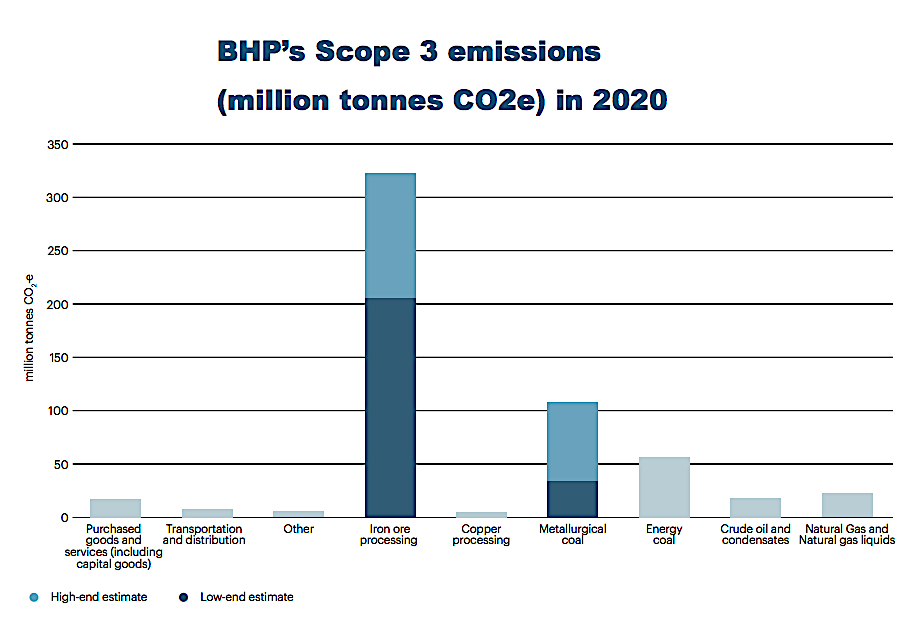In an operational update on Wednesday, the company said it would take a write-down of between $1.15 billion and $1.25 billion on its New South Wales Energy Coal (NSWEC) assets, reducing its value to between $250 million and $350 million.
BHP said the impairment reflected current market conditions for Australian thermal coal, used as fuel for power plants. It also named weakness in the Australian dollar, changes to the mine plan and an updated assessment of the likelihood of recovering tax losses as secondary reasons for the charge.
The company has been taking several steps away from thermal coal in recent years. It began by making a key statement in 2018, when it left the World Coal Association (WCA) citing “differences” on climate change views. Before that, it had hinted it intended to remove the fossil fuel from its portfolio “potentially sooner than expected.”
Thermal coal currently makes up a very small part of BHP’s portfolio, contributing about 3% of turnover.
The mining giant has restated since that it would rather focus on commodities that enable the electrification of transport and the decarbonization of stationary power, such as copper and nickel.
Thermal coal currently makes up a very small part of BHP’s portfolio, contributing about 3% of turnover. Prices for the commodity have steadily fall and the company had to sell it for $44.35 a tonne in the second half of last year, down 24% on the same period in 2019.
The figure is well below the cost of mining thermal coal, which BHO estimates is between $55 and $59 a tonne.
Metallurgical coal, instead, is an important commodity for BHP. The company is the world’s top supplier of the steel-making ingredient, which price has also slumped — to $97.61 in the second half of 2020, a 31% drop from same period the previous year.
The Australian coal industry has been rocked by China’s decision to ban imports believed to be in retaliation for Canberra’s call for an international probe of the origins of the coronavirus pandemic.
Iron ore, emissions
BHP’s exports of iron ore, by far its most valuable commodity, hit a new half-year record, the miner said, as China’s demand for the steel-making ingredient soared and the company’s Jimblebar mine in the Pilbara performed strongly.
The production of steel is one of the largest sources of carbon emissions, responsible for between 7% and 9% of global carbon emissions.
The traditional method of making iron and steel by smelting raw materials at extremely high temperatures has not changed much in more than 150 years. Large blast furnaces rely on metallurgical coal to reduce iron ore into liquid metal, which is then refined into steel.

Yielding to pressure from stakeholders, BHP committed in 2019 $400 million over five years to reduce greenhouse gas emissions from its operations and mined commodities.
It has also vowed to reduce its Scope 3 emissions — those generated by customers through the use of the company’s commodities — which are 40 times greater than those generated by its mines and oilfields. The plan is to cut such emissions by 30% by 2030 from last year’s levels.
In addition to Mt Arthur and Cerrejón mines, BHP has an 80% stake in BHP Mitsui Coal, a joint venture with Mitsui that mines coking and thermal coal in Queensland, Australia.




